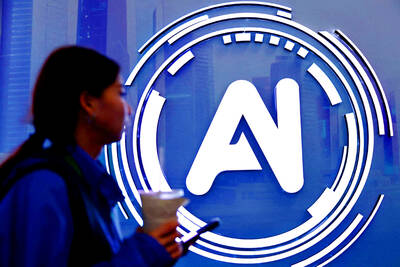Apple co-founder Steve Jobs pushed the envelope many times when it came to product design, and the results weren’t always pretty. Here are seven products created under his direction that failed commercially or functionally:
Apple III (1981): The successor to the very popular Apple II was focused on business users and priced accordingly. Unfortunately, the hardware was unreliable. Apple lost the business market to the IBM PC, launched the same year, and a fast-expanding market of PC clones.
Lisa (1983): The first commercially produced computer with a graphical user interface cost US$9,995 when it was launched. It quickly fell into the shadow of the cheaper Macintosh, launched a year later.
NeXT Computer (1989): Jobs’ venture after being forced out of Apple created a computer that was in many ways ahead of its time, but in the vein of the Apple III and Lisa, it was also too expensive to catch on with mainstream users.
Puck Mouse (1998): The new iMac was the first major product created after Jobs’ return to Apple in 1996, and it was a big success, despite its tiny, round mouse. Users couldn’t tell which way it was oriented by feel, and it tended to disappear in the cup of the hand, making it hard to use.
The Cube (2000): This small desktop computer was beautifully encased in a cube of clear plastic. It won design awards, but was a flop in stores because of its high price. It also didn’t really offer any functional benefits over other Macs.
iTunes phone (2005): Apple first ventured into the cellphone business by forming a partnership with Motorola Inc to launch the ROKR in late 2005. As a phone, it was decent if unexciting, but as a music player, it fell far short of the iPod. It could only hold 100 songs and transferring them from the computer was a slow process.
Apple TV (2007): Apple’s foray into the living room featured a small box that connected to a TV and to a Mac in the home. A tiny remote allowed the owner to play music and movies from the PC on the TV. It was expensive, at US$249, and complicated to set up and use. Last year, Apple introduced a much improved, cheaper Apple TV designed to connect directly to the Internet.

CHIP RACE: Three years of overbroad export controls drove foreign competitors to pursue their own AI chips, and ‘cost US taxpayers billions of dollars,’ Nvidia said China has figured out the US strategy for allowing it to buy Nvidia Corp’s H200s and is rejecting the artificial intelligence (AI) chip in favor of domestically developed semiconductors, White House AI adviser David Sacks said, citing news reports. US President Donald Trump on Monday said that he would allow shipments of Nvidia’s H200 chips to China, part of an administration effort backed by Sacks to challenge Chinese tech champions such as Huawei Technologies Co (華為) by bringing US competition to their home market. On Friday, Sacks signaled that he was uncertain about whether that approach would work. “They’re rejecting our chips,” Sacks

It is challenging to build infrastructure in much of Europe. Constrained budgets and polarized politics tend to undermine long-term projects, forcing officials to react to emergencies rather than plan for the future. Not in Austria. Today, the country is to officially open its Koralmbahn tunnel, the 5.9 billion euro (US$6.9 billion) centerpiece of a groundbreaking new railway that will eventually run from Poland’s Baltic coast to the Adriatic Sea, transforming travel within Austria and positioning the Alpine nation at the forefront of logistics in Europe. “It is Austria’s biggest socio-economic experiment in over a century,” said Eric Kirschner, an economist at Graz-based Joanneum

BUBBLE? Only a handful of companies are seeing rapid revenue growth and higher valuations, and it is not enough to call the AI trend a transformation, an analyst said Artificial intelligence (AI) is entering a more challenging phase next year as companies move beyond experimentation and begin demanding clear financial returns from a technology that has delivered big gains to only a small group of early adopters, PricewaterhouseCoopers (PwC) Taiwan said yesterday. Most organizations have been able to justify AI investments through cost recovery or modest efficiency gains, but few have achieved meaningful revenue growth or long-term competitive advantage, the consultancy said in its 2026 AI Business Predictions report. This growing performance gap is forcing executives to reconsider how AI is deployed across their organizations, it said. “Many companies

Taiwan’s long-term economic competitiveness will hinge not only on national champions like Taiwan Semiconductor Manufacturing Co. (TSMC, 台積電) but also on the widespread adoption of artificial intelligence (AI) and other emerging technologies, a US-based scholar has said. At a lecture in Taipei on Tuesday, Jeffrey Ding, assistant professor of political science at the George Washington University and author of "Technology and the Rise of Great Powers," argued that historical experience shows that general-purpose technologies (GPTs) — such as electricity, computers and now AI — shape long-term economic advantages through their diffusion across the broader economy. "What really matters is not who pioneers